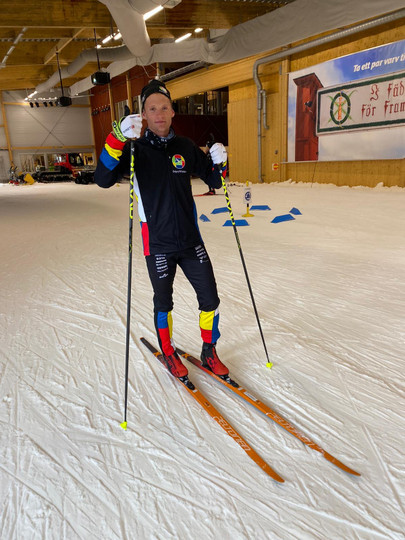Posted by Simon Zink, Enjoy Winter Nordic Team Solutions Factory Team on Nov 8th 2024
Making the Most of the Transition to On Snow Skiing
Making the Most of the Transition to On Snow Skiing
by Enjoy Winter Nordic Team Solutions Factory Team Member Simon Zink
As the snow begins to fall, our training shifts from asphalt to snow and from a lower intensity focus to high intensity sharpening. It’s easy to get lost in the excitement of returning to snow and forget about intensity control and technique transfer, proper nutrition and recovery, and balancing training modalities. Emphasizing these components while clipping back into the longer boards will ensure higher quality training, and overall a smoother more fulfilling transition.

Gliding on snow is an incredible feeling. Especially after waiting for months. Often, people get carried away and ski too fast on longer easy sessions when first getting back to snow. Balancing working on technique while staying in the proper training zone for the day is not simple, as it often requires more effort and a higher intensity to practice technical changes. This is ok and encouraged, as technique is a critical component of ski speed. However, it can be more productive to be intentional in defining the times you allow yourself to ski out of zone in easy distance skis. This means scheduling periods of technique work where skiing is done with a complete focus on making a specific technique change, unconcerned with the intensity drifting upwards. The remainder of the ski should be completed with technique still the priority, but while staying rigid in keeping the intensity at the proper level. This way, awareness and control of the hours spent at higher intensity is retained, and training adjustments to maximize the overall training adaptation can be made in accordance. Without this intention, it’s common to ski too fast and without technique focus in distance sessions, which can have you wondering why you don’t have the energy or ski feel to perform in the actual high intensity interval sessions.

Pairing intensity control and focused technique work with proper nutrition and recovery is basic training sense. But, it is even more critical when energy and training demands shift as they do during the transition from rollerskiing to cross country skiing. Your energy system is accustomed to the training you have performed all summer and fall. Snow skiing requires specific muscular and metabolic demands that you haven’t been exposed to yet early season. Carrying plenty of food and fluids on your skis, and fueling before and after training in a slight excess of what you may normally take in, ensures your body’s needs are being met to make your training as high quality as possible during this transition period. It always pays to be over fueled rather than under fueled.
Cross country skiing is a unique sport in that the use of many different training modalities, from running, rollerskiing, biking, strength training, to ski touring not only transfer to skiing, but actually provide improvements to cross country skiing ability. beyond those incurred from exclusive ski specific training. Being able to develop and grow physically and mentally in so many unique athletic capacities can be incredibly fulfilling. Furthermore, this combination of exposure to different sports in itself, catalyzes new and unique growth that can allow you to get more out of each athletic
pursuit than you would if pursuing them individually. When returning to snow, it's best to keep up with other training modalities like running and rollerskiing. It may seem natural to maximize the amount of time you spend skiing when snow is available. However, training types like running and rollerskiing, provide strength, power, and coordination stimuli that cross country skiing doesn’t and can improve your capacity on skis. Keeping up with these other training modalities even as you ski, will improve performance on snow and keep things fresh mentally.
Cross country skiing is a thrilling and fun experience. It should be kept that way. Remaining cognizant of training intensity and technique focus, emphasizing nutrition and recovery, and maintaining other training modalities during the return to skiing on snow will boost training quality and the joy experienced from the sport.

